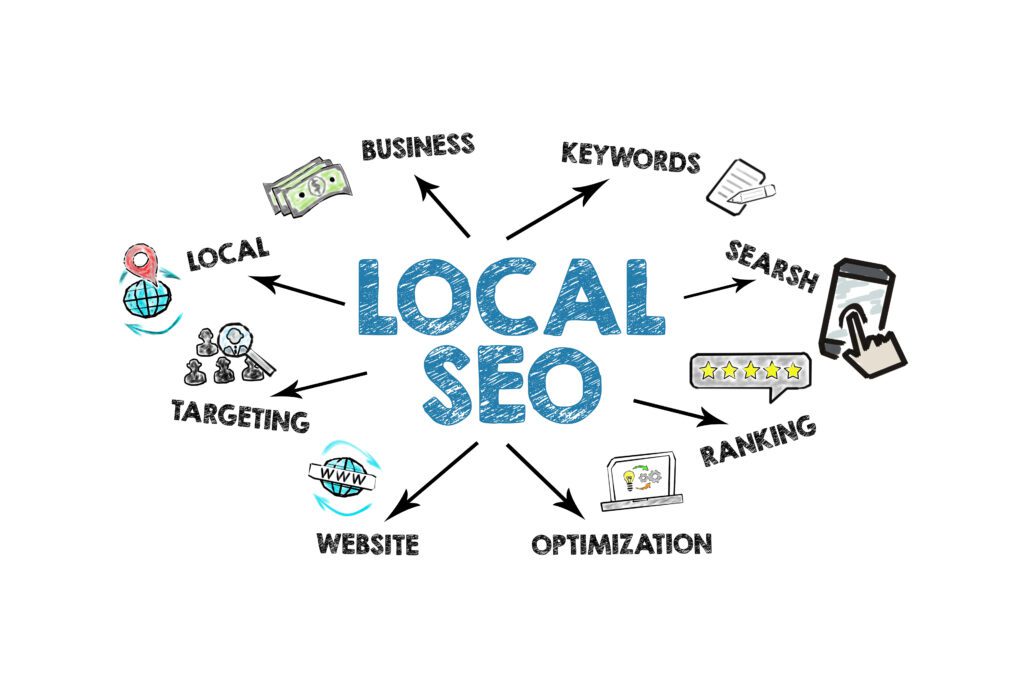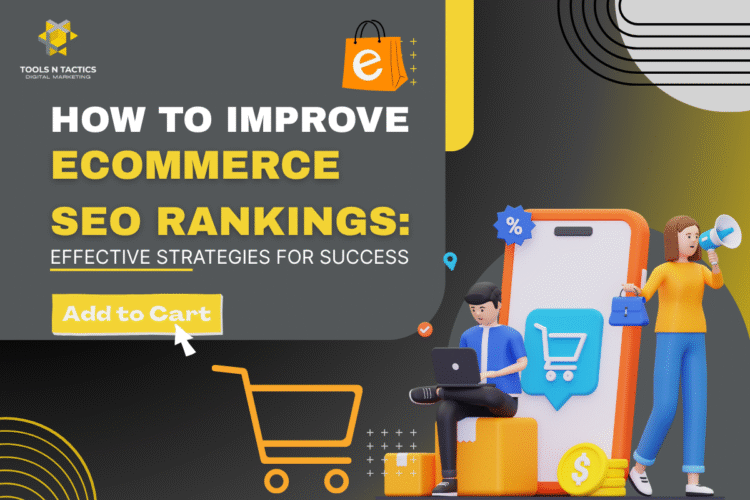

Creating a robust local SEO strategy is essential for any local business aiming to enhance its online presence and attract more customers. By optimizing your online profile, utilizing local keywords, and engaging with your community through various digital platforms, you can significantly improve your visibility in local search results. This targeted approach not only helps you stand out in a competitive landscape but also connects you with potential customers actively searching for the services you offer.
Understanding the dynamics of local search allows you to tailor your marketing efforts effectively. From setting up your Google Business Profile to optimizing your website for local keywords, these steps can lead to increased traffic and higher conversion rates. Implementing location-based strategies ensures that your business appears at the forefront when customers in your area are searching for relevant services or products.
As you develop your local SEO strategy, remember that consistent engagement and quality content play a crucial role in building trust and authority. Focusing on these elements will not only boost your rankings but also foster loyalty among your local customer base, leading to sustainable growth for your business.


Understanding the Fundamentals of Local SEO
Local SEO is essential for businesses aiming to attract nearby customers. It involves unique strategies designed to enhance visibility in local search results. Knowing its key components and benefits will help you effectively implement a successful local SEO strategy.
What is Local SEO?
Local SEO refers to the process of optimizing your online presence to rank higher in local search results. This includes adjustments to your website, Google My Business listing, and online profiles to ensure they align with local searches. When someone searches for services in their vicinity, local SEO makes your business more discoverable. Effective techniques include optimizing keywords for local relevance and encouraging customer reviews. By focusing on your geographic area, you can attract potential customers actively looking for your offerings.
Key Benefits for Small Businesses
Implementing a robust local SEO strategy can significantly enhance your business’s visibility. First, it helps potential customers find your business when searching for products or services nearby. This increased visibility can lead to higher foot traffic and conversions. Local SEO also improves your credibility; a well-optimized presence establishes trust among consumers. Moreover, it’s cost-effective compared to traditional advertising, as it targets users actively seeking local solutions. Small businesses that prioritize local search engine optimization can effectively compete against larger entities by attracting a loyal customer base right in their community.
Difference Between Local and Organic SEO
While local SEO and organic SEO share similarities, they serve different purposes. Organic SEO aims to improve visibility across broader search results, regardless of location. Conversely, local SEO focuses exclusively on geographic relevance, addressing users searching with local intent. This means local SEO emphasizes factors such as Google Maps integration and location-based keywords, while organic SEO targets a wider array of keywords without a geographical filter. Understanding this distinction allows you to tailor your marketing strategies effectively, ensuring you meet both local and broader audience needs.
Optimizing Your Google Business Profile


Your Google Business Profile is a critical tool for increasing visibility and attracting local customers. Focusing on key optimizations can significantly enhance the effectiveness of your profile, making it easier for potential clients to find you when searching online.
Claiming and Verifying Your Listing
The first step in optimizing your Google Business Profile is claiming and verifying your listing. You should start by searching for your business on Google. If it appears, you can claim it through your Google account. Verification often involves receiving a postcard at your business address with a code to confirm ownership. Once verified, your business is more likely to show in local search results, helping potential customers easily discover you. Remember, a verified listing enhances trustworthiness and can drive more traffic to your profile.
Completing Your Business Information
An incomplete business profile can result in missed opportunities. Ensure all pertinent information is filled out, including your business name, address, phone number, and business hours. Accurate contact information is essential; customers will rely on it to reach you. Update your hours during holidays or special events and consider adding a brief description of your services. Including keywords relevant to your business can also improve your visibility in searches, making your profile more appealing to potential customers.
Managing Reviews and Ratings
Customer reviews play a vital role in building your online reputation. Encourage satisfied clients to leave positive reviews on your Google Business Profile. Responding to reviews, whether positive or negative, demonstrates your commitment to customer satisfaction. Acknowledging positive feedback can further encourage others to share their experiences. Regularly monitoring your reviews helps you stay updated on customer perceptions and can inform improvements in your services. Engage with your customers through feedback to foster loyalty and show prospective clients that you value their opinions.
Utilizing Google Maps and Directions
Incorporating Google Maps into your profile can significantly enhance navigation to your business. Ensure your address is complete and accurate so that driving directions are seamless for customers. Use features like “Get Directions” to guide potential clients directly to your location. If applicable, include parking information or public transport options to make visiting easier. This can enhance customer satisfaction and increase foot traffic, ultimately benefiting your business’s growth and visibility in local search results.
Enhancing On-Page SEO for Local Relevance
Focusing on local relevance in your on-page SEO strategy will significantly improve your site’s visibility for your target audience. By optimizing specific elements such as keywords, meta tags, and schema markup, you can effectively attract local traffic and enhance user engagement.
Targeting Location-Specific Keywords
Identifying and using location-specific keywords is crucial for local SEO. Start by conducting thorough keyword research to find terms that potential customers use when searching for services like yours in your area. Tools like Google Keyword Planner can help you discover local keywords with high search volume.
Incorporate these keywords naturally into your content, including in headings, subheadings, and body text. This helps search engines understand your site’s relevance to local searches. Additionally, consider creating blog posts or landing pages that focus on local events or topics to attract even more local traffic.
Optimizing Meta Tags and Headings
Your meta tags and headings play a vital role in on-page optimization. Ensure that the title tags and meta descriptions contain your target location-specific keywords. This not only helps search engines rank your page but also increases click-through rates from search results.
For headings, use clear and descriptive H1 and H2 tags that incorporate local keywords. This creates a logical structure that benefits both readers and search engines. Aim to keep title tags under 60 characters and meta descriptions around 150 characters for optimal display in search results.
Integrating Schema Markup
Schema markup is essential for helping search engines understand your content better. Implementing local business schema can enhance your visibility in search results and assist your business in appearing in local packs.
Include important details such as your business name, address, phone number, and operating hours. This structured data can also improve your chances of being featured in rich snippets, giving potential customers more reasons to choose your services. Use online tools to generate and validate your schema markup to ensure it’s correctly implemented.
Building Local Citations and Business Listings


Creating local citations and business listings is essential for enhancing visibility in local search results. Focus on maintaining NAP consistency, selecting appropriate directories, and maximizing the effectiveness of your citations. These strategies will help your business connect with potential customers more effectively.
NAP Consistency Across Platforms
Maintaining NAP (Name, Address, Phone number) consistency is crucial for local SEO. Discrepancies in your business name, address, or phone number across various platforms can confuse search engines and users. When Google finds consistent NAP information, it enhances your credibility and helps improve your rankings.
To ensure consistency, start by compiling a list of all business listings, including your website, Google Business Profile, Yelp, and Yellow Pages. Use this list to verify and update your information on each platform. Regular audits can help maintain NAP accuracy and minimize variations. Pay attention to formatting as well, using the same abbreviations and punctuation across all listings.
Choosing the Right Local Directories
Not all directories hold equal value for local SEO. Focus on high-authority local directories relevant to your industry and region. Start with major players like Google Business Profile, Yelp, and Bing Places, then explore niche directories specific to your business sector.
Before submitting, evaluate each directory’s reputation and engagement rates. Aim for platforms that attract users interested in services similar to yours. This targeted approach increases the chances of connecting with potential customers. Additionally, prioritize directories that allow user reviews, as positive customer feedback can bolster your credibility and visibility.
Maximizing the Value of Business Citations
Once your citations are established, it’s vital to maximize their effectiveness. Begin by optimizing your business descriptions to include keywords that reflect your services. This can improve your visibility in search results and help users understand your business better.
Incorporate rich media, such as photos and videos, to make your listings more engaging. Visual content can capture attention and lead to higher interaction rates. Actively manage your business listings by responding to reviews and updating any changes to your NAP information promptly. Engaging with customers demonstrates your commitment to service and can enhance your reputation online.
Driving Engagement Through Reviews, Backlinks, and Social Media
Engagement is crucial for enhancing your local SEO strategy. Focusing on positive online reviews, acquiring high-quality backlinks, and leveraging social media can significantly boost your visibility and revenue. Here’s how to effectively utilize these elements.
Encouraging Positive Online Reviews
Positive online reviews are essential for establishing a strong reputation. Encourage your customers to leave reviews on platforms like Yelp, Google My Business, and Facebook. You can send follow-up emails after a purchase or service, kindly asking for their feedback.
Make it easy for customers to leave reviews by providing direct links to your profiles. Highlighting testimonials on your website can also showcase your credibility and build trust with potential clients. Remember, a collection of positive reviews not only enhances your brand visibility but also influences purchasing decisions, ultimately driving more revenue.
Acquiring High-Quality Local Backlinks
High-quality local backlinks play a significant role in improving your local search rankings. Start building relationships with local businesses, bloggers, and community organizations. Offer to write guest posts or collaborate on community events. This link-building strategy not only earns you valuable backlinks but also increases brand awareness.
Consider directories and local business listings for additional opportunities. Getting your business listed on relevant platforms creates a web of backlinks that supports your local SEO efforts. The more credible the backlinks, the more Google sees your site as a trusted source, positively impacting your visibility and ranking.
Leveraging Social Media for Local Visibility
Social media is a powerful tool for enhancing your local visibility. Share engaging content, including promotions and events, to attract more followers. Use platforms like Facebook and Instagram to showcase customer interactions and positive reviews, which enhances your online reputation.
Engaging with your audience through comments and messages can build community and loyalty. Consider using location tags and local hashtags to reach a broader semi-local audience. This approach not only draws more traffic to your social media channels but also complements your SEO strategy by driving interested visitors to your website.
Measuring and Improving Your Local SEO Strategy
To enhance your local SEO efforts, it’s crucial to regularly track performance, analyze conversion rates, and engage in continuous optimization. This systematic approach will help you understand where you stand and what adjustments are necessary.
Tracking Local Search Rankings and Traffic
Monitoring your local search rankings is vital for understanding your visibility. Utilize tools such as Google Search Console to assess your performance in local search results. Track your position in the map pack and organic search results, which can provide insight into your local SEO campaign effectiveness.
You should benchmark these rankings against local search ranking factors, such as proximity and keyword relevance. Analyze your organic traffic trends over time, identifying changes that may correlate with specific adjustments in your digital marketing strategy. This data will guide your next steps, ensuring you remain competitive against other local businesses.
Analyzing Conversion Rates and Leads
Analyzing conversion rates helps you evaluate how effectively your website turns visitors into leads. Begin by setting specific goals in tools like Google Analytics. Monitor key metrics, such as the number of leads generated from your local SEO campaigns.
Consider looking at foot traffic as another important metric. Local searches often lead users to visit a physical location. Track both online engagement and offline visits to gauge the complete impact of your strategy. Identifying which channels yield the highest conversion rates can direct your focus toward improving those areas and maximally leveraging targeted traffic.
Ongoing Optimization and Competitor Monitoring
Continuous optimization is essential in maintaining your local SEO strategy. Regularly update your Google Business Profile with accurate information, including NAP (Name, Address, Phone) consistency across directories to enhance online visibility.
Additionally, keep tabs on your competitors. Conduct competitor research to determine their strategies, which keywords they rank for, and how they engage with customers online. This intelligence allows you to adapt and refine your own approach, ensuring you remain agile and competitive within your market. Regularly reviewing performance will facilitate informed adjustments to keep your local SEO efforts effective and aligned with industry trends.
Frequently Asked Questions
Local SEO involves various strategies and techniques designed to enhance your business’s online visibility within local search results. Understanding key components and best practices can significantly boost your online presence.
What are the key components of a successful local SEO campaign?
A successful local SEO campaign includes optimizing your Google Business Profile, implementing local keywords, and building high-quality backlinks. Ensure your business’s name, address, and phone number (NAP) are consistent across all online platforms. Engaging with customer reviews also plays a crucial role in improving local rankings.
What steps should be taken to optimize a website for local search?
Start by conducting keyword research focused on local terms relevant to your industry. Optimize title tags and meta descriptions with these keywords. Ensure your website is mobile-friendly, as many local searches are conducted on mobile devices. Use schema markup to help search engines understand your business better.
How can small businesses effectively leverage local SEO?
Small businesses can leverage local SEO by claiming and optimizing their Google Business Profile. Engaging with local communities and participating in local events can enhance visibility. Creating localized content that addresses the needs and interests of your community also helps attract relevant customers.
What is a local SEO checklist to ensure complete optimization?
A local SEO checklist should include the following steps:
- Verify and optimize your Google Business Profile.
- Ensure NAP consistency across all online directories.
- Conduct keyword research and optimize website content.
- Build local citations in relevant directories.
- Encourage customer reviews and respond to them.
How does one measure the success of a local SEO strategy?
Success in local SEO can be measured through various metrics. Track your rankings for local keywords over time, and monitor the increase in organic traffic. Use tools like Google Analytics to evaluate user engagement metrics, such as bounce rates and conversion rates from local searches.
What are the best practices for combining content marketing with local SEO?
Combining content marketing with local SEO involves creating engaging, locally-focused content. Write blog posts that highlight local events or businesses. Share user-generated content and encourage customers to share their experiences. Utilize social media to promote your local content and engage with your audience.




